Passionflower
- December 20, 2023
- 0 comment
Passionflower, scientifically known as Passiflora incarnata, is a captivating botanical species celebrated for its striking beauty and diverse applications. This climbing vine, native to the southeastern United States, boasts intricate and unique flowers characterized by a complex structure of petals, filaments, and a central crown.

The name “Passiflora” is derived from the symbolic association of the flower’s components with elements of the Passion of Christ. Beyond its religious and aesthetic significance, Passionflower has a rich history of traditional medicinal use. The plant’s leaves and flowers are often employed for their potential calming properties, containing compounds like flavonoids and alkaloids that are believed to have soothing effects.

This has led to the incorporation of Passionflower into herbal remedies and natural supplements, particularly for addressing issues related to stress, anxiety, and sleep. With a balance of botanical allure and potential health benefits, Passionflower, especially Passiflora incarnata, continues to be a fascinating subject in both horticulture and herbal medicine.
| Characteristic | Description |
|---|---|
| Scientific Name | Passiflora incarnata |
| Common Name | Passionflower |
| Family | Passifloraceae |
| Native Range | Southeastern United States |
| Growth Habit | Climbing vine |
| Flowers | Intricate, unique structure; symbolic significance |
| Medicinal Use | Traditionally used for calming properties |
| Key Compounds | Flavonoids, alkaloids |
| Potential Benefits | Calming, stress relief, anxiety management |
| Applications | Herbal remedies, natural supplements |
| Horticultural Interest | Ornamental value, popular in gardens |
| Religious Symbolism | Associated with elements of the Passion of Christ |
Exploring the Enchanting World of Passionflower
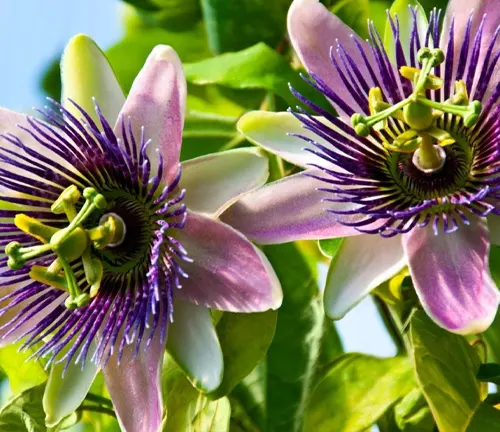
Passionflower, scientifically known as Passiflora incarnata, emerges as a botanical marvel with its intricate and captivating features. Delving into its botanical realm unveils a mesmerizing tapestry of petals, filaments, and a central crown, making it a standout in the world of flowering vines. As we explore its botanical intricacies, a deeper appreciation for the elegance of Passionflower unfolds.
Passionflower’s Ornamental Allure in Gardens
Beyond its native habitat in the southeastern United States, Passionflower has found a place of honour in gardens worldwide, adding a touch of woodland elegance. Its climbing vines and showy flowers, reminiscent of a delicate dance in the wind, make it a sought-after ornamental plant. Let’s embark on a journey through the garden paths adorned with the enchanting presence of Passionflower.
Nurturing Nature Through Passionflower
In addition to its aesthetic charm, Passionflower plays a crucial role in the ecological tapestry. As a native species, it contributes to biodiversity and supports local ecosystems. The interaction between Passionflower and its environment sheds light on the interconnected web of life, emphasizing the importance of preserving and protecting this botanical gem.
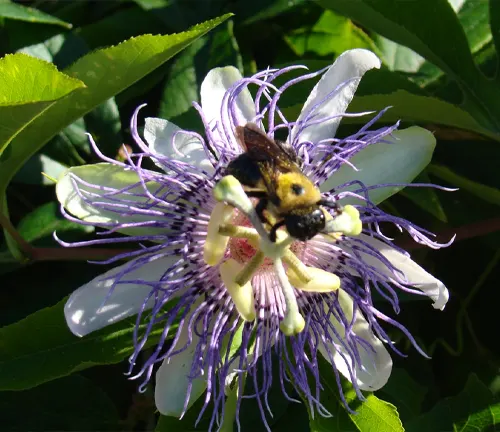

Tending to Passionflower’s Future
Understanding the cultivation and conservation of Passionflower becomes paramount as we strive to maintain the delicate balance between human enjoyment and ecological sustainability. Exploring best practices for cultivation and conservation ensures that future generations can continue to appreciate the beauty and benefits of this extraordinary plant.
Passionflower as Nature’s Erosion Fighter
Passionflower’s ecological impact extends to soil stabilization, making it a natural ally in preventing erosion. The extensive root system of this climbing vine helps bind soil particles together, offering a sustainable solution to soil erosion issues. Discover the silent yet powerful role Passionflower plays in maintaining the stability of our natural landscapes.
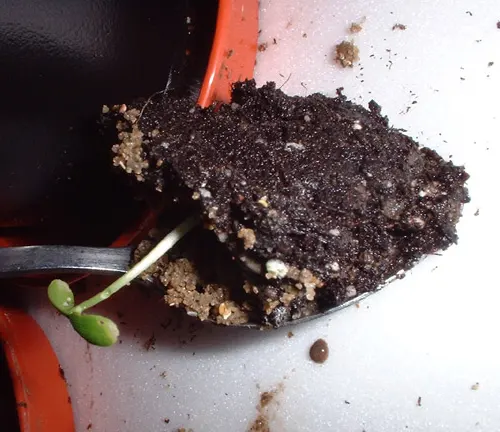
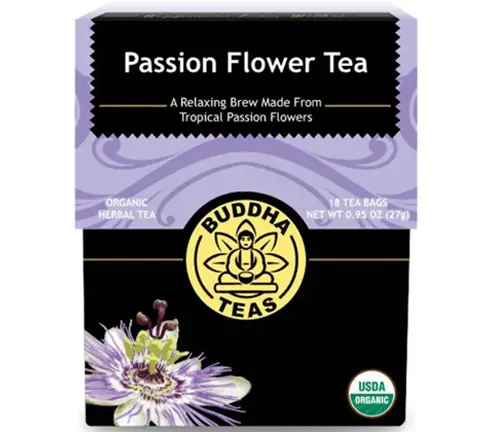
From Herbal Remedies to Decorative Arts
Throughout history, Passionflower has served diverse purposes beyond its visual appeal. From traditional herbal remedies to decorative arts, this versatile plant has left its mark on various aspects of human culture. Uncover the manifold ways in which Passionflower has been woven into the fabric of human practices and traditions.
Unveiling the Therapeutic Potential of Passionflower
The petals and leaves of Passionflower hold more than just visual appeal—they house compounds with potential therapeutic benefits. Explore the calming properties attributed to Passionflower, its traditional use in alleviating stress and anxiety, and how modern science is unlocking the secrets behind its potential health benefits.

Unveiling the Wonders of Passionflower
Passionflower, scientifically recognized as Passiflora incarnata, is a botanical masterpiece that reveals its brilliance through a complex interplay of biological elements. This exploration into its biological intricacies offers a glimpse into the fascinating world of a plant that has captivated human interest for centuries.
Tracing Passionflower’s Native Territories
Understanding the geographic distribution of Passionflower provides insights into its natural habitats. A detailed exploration of its habitat map unveils the regions where this captivating plant thrives, offering a glimpse into the environmental factors that contribute to its growth and flourishing.

Decoding the Chemistry of Passionflower
Delving into the chemical composition of Passionflower unravels a treasure trove of bio active compounds. From flavonoids to alkaloids, each component plays a role in shaping the plant’s characteristics and potential benefits. This closer look at the components of Passionflower sheds light on the chemistry that underlies its therapeutic and aesthetic appeal.
Navigating Passionflower’s Potential Effects
As with any botanical remedy, it’s crucial to understand potential side effects associated with Passionflower. This section navigates through the nuanced landscape of side effects, providing a balanced perspective on the plant’s interactions with the human body. Examining both its benefits and potential drawbacks allows for a more informed approach to incorporating Passionflower into our lives.
Different Species
Passiflora incarnata
(Purple Passionflower)
Native to the southeastern United States, it is known for its intricate purple and white flowers. The plant has a history of traditional medicinal use for its potential calming properties.

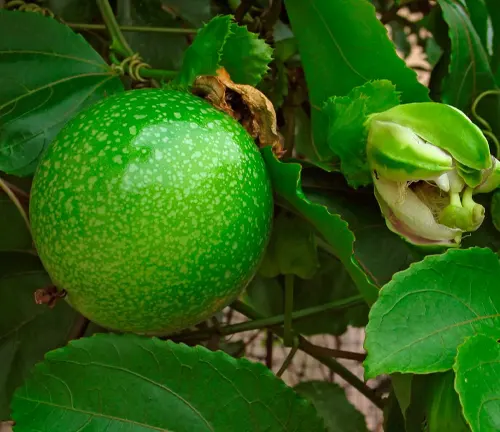
Passiflora edulis
(Passion Fruit)
This species produces the well-known passion fruit, cherished for its sweet and tangy flavor. It is native to South America but is now cultivated in various tropical and subtropical regions.
Passiflora caerulea
(Blue Passionflower)
A hardy vine with striking blue and white flowers, it is native to South America. Blue passionflower is often grown for ornamental purposes in gardens.
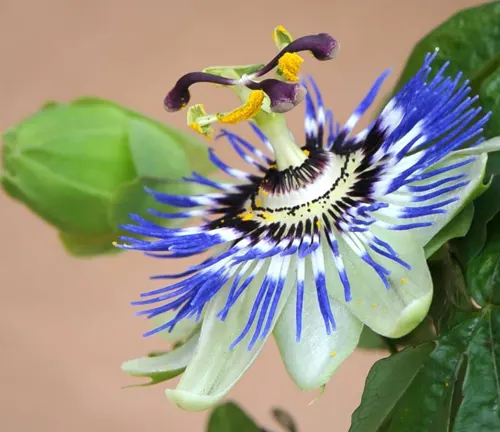

Passiflora ligularis
(Sweet Granadilla)
Also producing passion fruit, this species is native to northwestern South America. The sweet granadilla has a unique taste and is cultivated for its fruits.
Passiflora quadrangularis
(Giant Granadilla)
Native to the neotropics, this species is known for its large fruits and robust vines. The giant granadilla is cultivated for both ornamental and edible purposes.
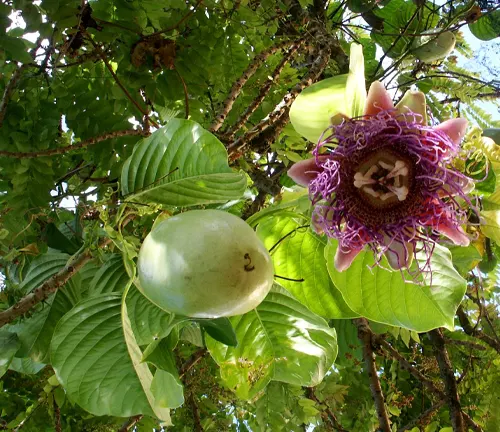
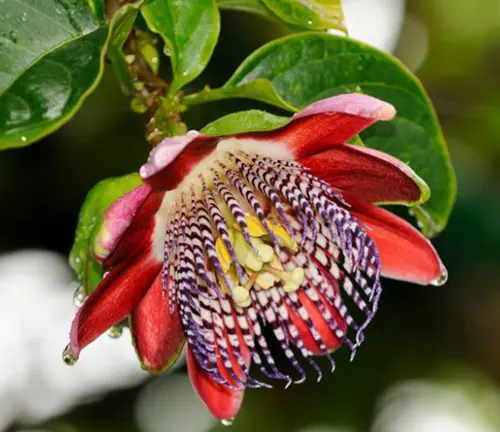
Passiflora alata
(Winged-stem Passionflower)
Characterised by its winged stems, this passionflower species is native to Brazil. It is appreciated for its fragrant flowers and is sometimes cultivated for its ornamental value.
Passiflora coccinea
(Red Passionflower)
Native to the southeastern United States, this species features vibrant red flowers. It is often grown as an ornamental plant in gardens.

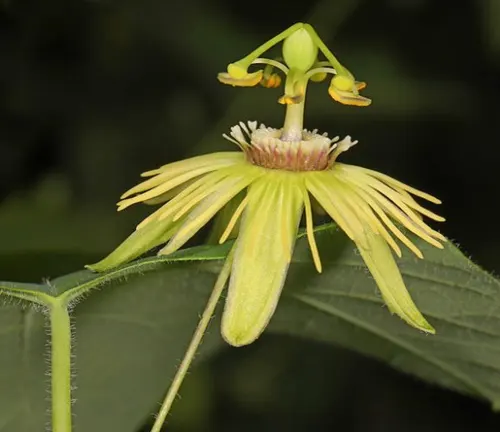
Passiflora lutea
(Yellow Passionflower)
Found in the southeastern United States, this passionflower species has small yellow flowers and is valued for its delicate appearance.
Passiflora antioquiensis
(Antioquia Passionflower)
Native to Colombia, this species is recognized for its unique and attractive flowers. It is sometimes cultivated for its ornamental appeal.

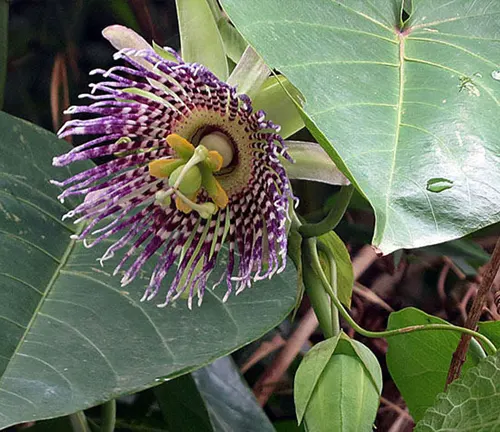
Passiflora ligularis
(Bolivian Sunset Passionflower)
Originating from South America, this species is admired for its stunning flowers with a sunset-like color palette. It is a popular choice for ornamental purposes.
Frequently Asked Questions (FAQs)
- What is Passionflower?
Passionflower (Passiflora) is a genus of flowering plants known for its unique and intricate flowers. Some species are valued for their ornamental beauty, while others have traditional uses in herbal medicine. - What are the Health Benefits of Passionflower?
Passionflower is believed to have potential health benefits, including promoting relaxation and alleviating mild anxiety. It is often used in herbal remedies and natural supplements. - How is Passionflower Used in Herbal Medicine?
The leaves and flowers of Passionflower are commonly used in herbal medicine. They can be prepared as teas, tinctures, or supplements and are believed to have calming properties. - Is Passionflower Safe to Consume?
When used as directed, Passionflower is generally considered safe for most people. However, it’s essential to be aware of potential interactions with medications and to consult with a healthcare professional before incorporating it into your routine. - Can I Grow Passionflower at Home?
Yes, many passionflower species can be grown at home, either for their ornamental value or for personal use. They typically thrive in warm, tropical, or subtropical climates. - Which Passionflower Species is Edible?
Passiflora edulis, commonly known as passion fruit, is the most well-known edible species. The fruit is enjoyed for its sweet and tangy flavor and is used in culinary applications. - What is the Symbolic Meaning of Passionflower?
The name “Passiflora” is derived from the flower’s association with the Passion of Christ. The unique structure of the flower’s components has symbolic significance in Christian traditions. - Does Passionflower Have Any Side Effects?
While generally considered safe, some people may experience mild side effects such as dizziness or gastrointestinal discomfort. It’s important to use Passionflower cautiously and seek medical advice if any adverse reactions occur. - Can Passionflower Help with Sleep?
Some people use Passionflower to promote relaxation and improve sleep. While research on its efficacy is ongoing, there is anecdotal evidence supporting its potential as a natural sleep aid. - Where is Passionflower Cultivated?
Passionflower is native to tropical and subtropical regions of the Americas. It is cultivated in various parts of the world, including the United States, South America, and Asia, for both ornamental and medicinal purposes.


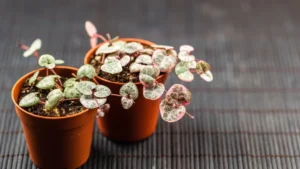
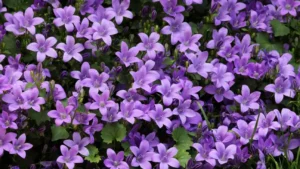
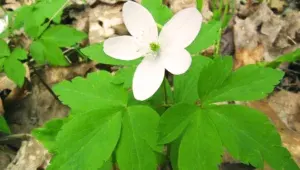
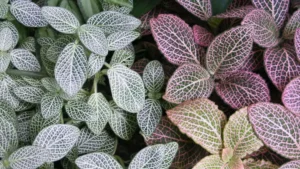
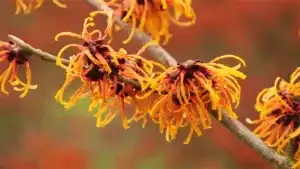
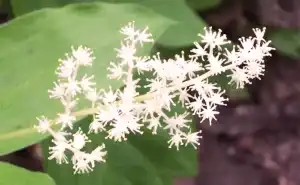
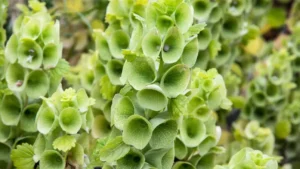


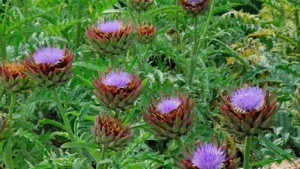

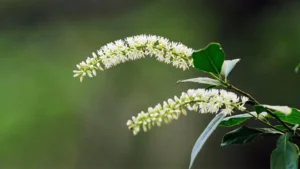
Leave your comment